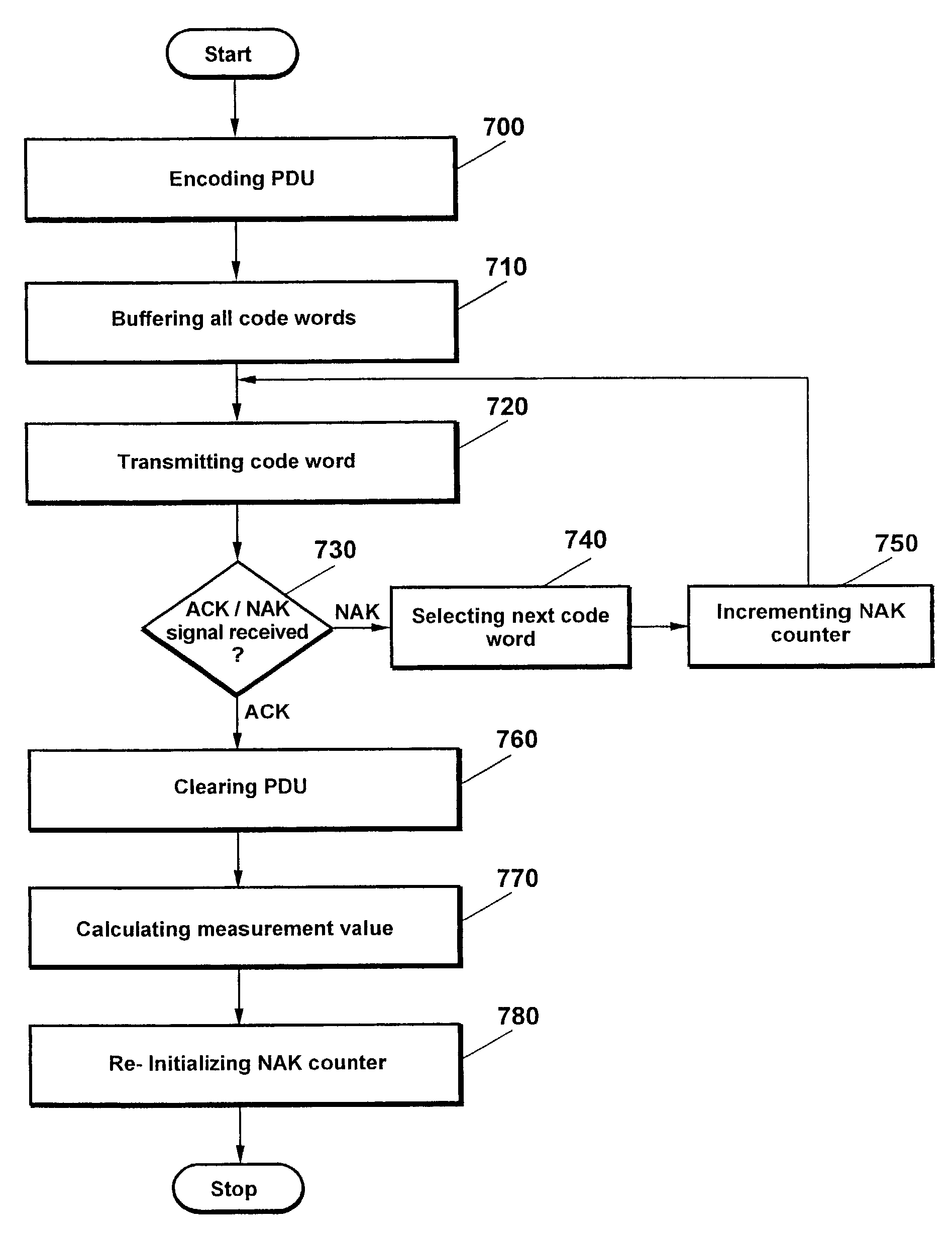Channel quality measurement in data transmission using hybrid arq
a hybrid arq and data transmission technology, applied in digital transmission, frequency-division multiplex, wireless communication, etc., can solve the problems of low knowledge of the channel conditions experienced by the receiver, inability to reliably measure the channel conditions, and inability to meet the requirements of certain conditions, so as to reduce the overhead
- Summary
- Abstract
- Description
- Claims
- Application Information
AI Technical Summary
Benefits of technology
Problems solved by technology
Method used
Image
Examples
Embodiment Construction
[0044]The invention will now be described in more detail with reference to the accompanying drawings.
[0045]The code rate r is the ratio of the number of information bits k to the number of transmitted coded bits n. Different code rates and code words can easily be generated using rate compatible punctured codes such as RCPT and RCPC codes. The code words are punctured from a common mother code. The mother code should have a low coding rate to allow several high code rate code words to be generated from it. Either the PDU or the mother code needs to be stored in the transmitter for the case retransmissions are requested and new code words are needed to be sent. While it will be understood by those of ordinary skill in the art that the invention is not limited to the specific embodiments described hereafter, it will now be assumed that the whole mother code (i.e. all code words) is stored in the transmitter for retransmissions. This reduces the complexity for encoding but needs more m...
PUM
| Property | Measurement | Unit |
|---|---|---|
| weight | aaaaa | aaaaa |
| transmission parameter | aaaaa | aaaaa |
| length | aaaaa | aaaaa |
Abstract
Description
Claims
Application Information
 Login to View More
Login to View More - R&D
- Intellectual Property
- Life Sciences
- Materials
- Tech Scout
- Unparalleled Data Quality
- Higher Quality Content
- 60% Fewer Hallucinations
Browse by: Latest US Patents, China's latest patents, Technical Efficacy Thesaurus, Application Domain, Technology Topic, Popular Technical Reports.
© 2025 PatSnap. All rights reserved.Legal|Privacy policy|Modern Slavery Act Transparency Statement|Sitemap|About US| Contact US: help@patsnap.com



